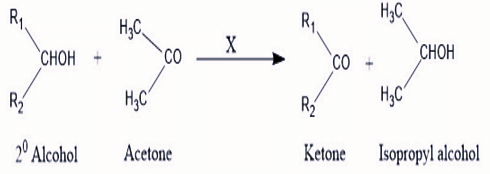Which functional group in drug molecules is most likely to undergo phase I metabolic oxidation by cytochrome P450 enzymes:
Show Hint
- Ester group
- Amide group
- Hydroxyl group
- Methyl group
The Correct Option is D
Solution and Explanation
Step 1: Role of cytochrome P450 enzymes in phase I metabolism. Cytochrome P450 enzymes are responsible for oxidative reactions in phase I metabolism. These reactions increase the polarity of drug molecules, preparing them for subsequent phase II metabolism and excretion.
Step 2: Oxidation of functional groups. Among the given functional groups:
- The methyl group is most likely to undergo oxidation, often forming hydroxyl groups (-CH3 → -CH2OH). This process is common in drugs containing alkyl groups.
- Other functional groups like esters and amides are usually hydrolyzed rather than oxidized.
- Hydroxyl groups are already oxidized and typically undergo conjugation in phase II metabolism rather than phase I oxidation.
Step 3: Incorrect options.
- (A) Ester group: Hydrolyzed in phase I metabolism, not oxidized.
- (B) Amide group: Hydrolyzed or remains intact during phase I metabolism.
- (C) Hydroxyl group: Generally conjugated in phase II metabolism, not oxidized.
Top Questions on carbonyl compounds
- Which of the following are neutral?
- KEAM - 2025
- Chemistry
- carbonyl compounds
- Acetone can be converted to 2-methylpropan-2-ol using:
- KEAM - 2025
- Chemistry
- carbonyl compounds
- The correct stability order of carbocations is
- JEE Main - 2024
- Chemistry
- carbonyl compounds
- According to Oppenauer Oxidation reaction, oxidation of secondary alcohol to ketone by reagent (X) in acetone takes place, what is "X" :

- GPAT - 2024
- Organic Chemistry
- carbonyl compounds
- The Gattermann-Koch reaction is used in the industrial preparation of benzaldehyde. The electrophile involved in this reaction is
- CUET (UG) - 2024
- Chemistry
- carbonyl compounds
Questions Asked in GPAT exam
- Which of the following alkaloids are found as salts of meconic acid?
- GPAT - 2025
- Introductory Pharmacognosy
Choose the correct match of laxative and its Mechanism of Action (MOA):

- GPAT - 2025
- Laxative
Match the following:
(P) Schedule H
(Q) Schedule G
(R) Schedule P
(S) Schedule F2
Descriptions:
(I) Life period of drugs
(II) Drugs used under RMP
(III) List of Prescription Drugs
(IV) Standards for surgical dressing
- GPAT - 2025
- Drug therapy
- Which of the following is used to evaluate disinfectant?
- GPAT - 2025
- Pathogens
Match the following:
(P) Tuberculosis (1) Bacterial
(Q) Diphtheria (2) Viral
(R) Yellow fever (3) Toxoids
(S) Malaria (4) Protozoal- GPAT - 2025
- Pathogens